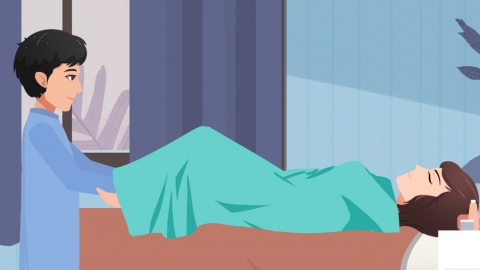What are the most typical clinical manifestations of uterine rupture?
Generally speaking, there is no standard list of "the most typical clinical manifestations of uterine rupture." As a severe complication involving a full-thickness tear of the uterine wall, uterine rupture typically presents clinically with severe abdominal pain, abnormal fetal heart rate, vaginal bleeding, abdominal tenderness and rebound tenderness, and sudden cessation of uterine contractions. A detailed analysis follows:

1. Severe abdominal pain: The patient suddenly experiences a tearing, intensely severe pain in the lower abdomen. The pain is persistent and rapidly spreads throughout the entire abdomen, replacing the original labor pains. This sudden severe pain is often unbearable and is commonly accompanied by restlessness and rapid breathing. This is a direct signal of uterine wall rupture.
2. Abnormal fetal heart rate: Fetal heart monitoring reveals a significant decrease or complete loss of fetal heart rate. The fetal heart rate drops sharply from the normal range, and in some cases, fetal heart activity may no longer be detectable. This occurs because the fetus experiences severe compression or hypoxia following uterine rupture, leading to abnormal vital signs.
3. Vaginal bleeding: Minor to moderate vaginal bleeding may occur, with bright red blood. If the rupture involves major blood vessels, bleeding can rapidly increase, leading to noticeable signs of blood loss within a short time, such as pale complexion and cold, clammy extremities. The extent of bleeding is closely related to the location and severity of the rupture.
4. Abdominal tenderness and rebound tenderness: Significant tenderness is present in the lower abdomen and throughout the abdomen. Pain intensifies abruptly when pressure is applied and quickly released, and the abdominal muscles become tense, feeling rigid and board-like upon palpation. These signs are caused by intra-abdominal bleeding and inflammatory irritation of the peritoneum, resulting in peritoneal irritation symptoms.
5. Sudden cessation of contractions: Previously regular uterine contractions stop abruptly. The woman senses the disappearance of abdominal tightness, and the nature of the pain changes from intermittent labor pain to persistent severe pain. This occurs because the uterine muscles lose their ability to contract after the rupture, rendering effective contractions impossible.
In daily life, pregnant women should undergo regular prenatal checkups, avoid severe abdominal trauma, and strictly follow medical advice regarding the mode of delivery. These measures can help reduce the risk of uterine rupture and ensure the safety of both mother and baby.







